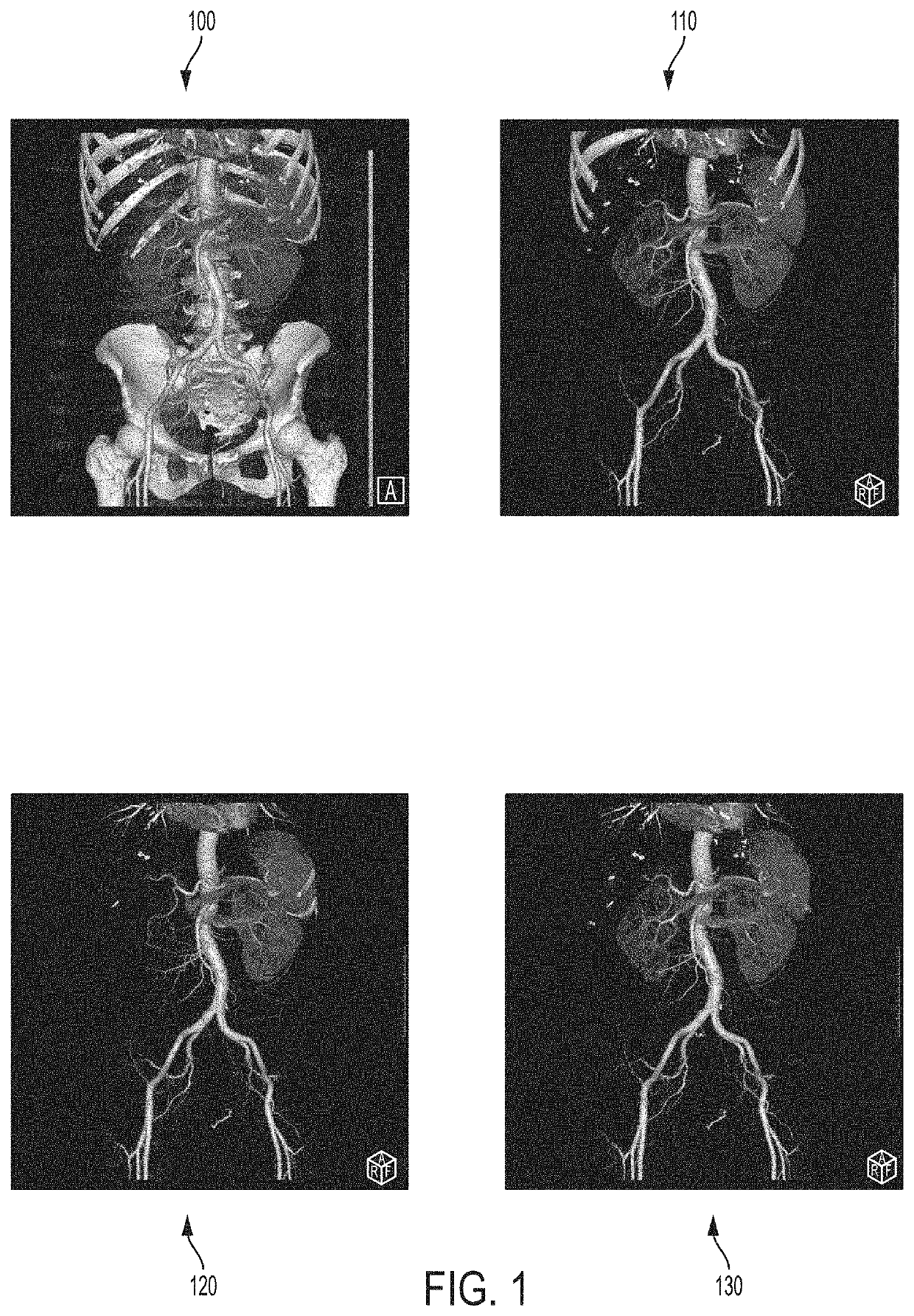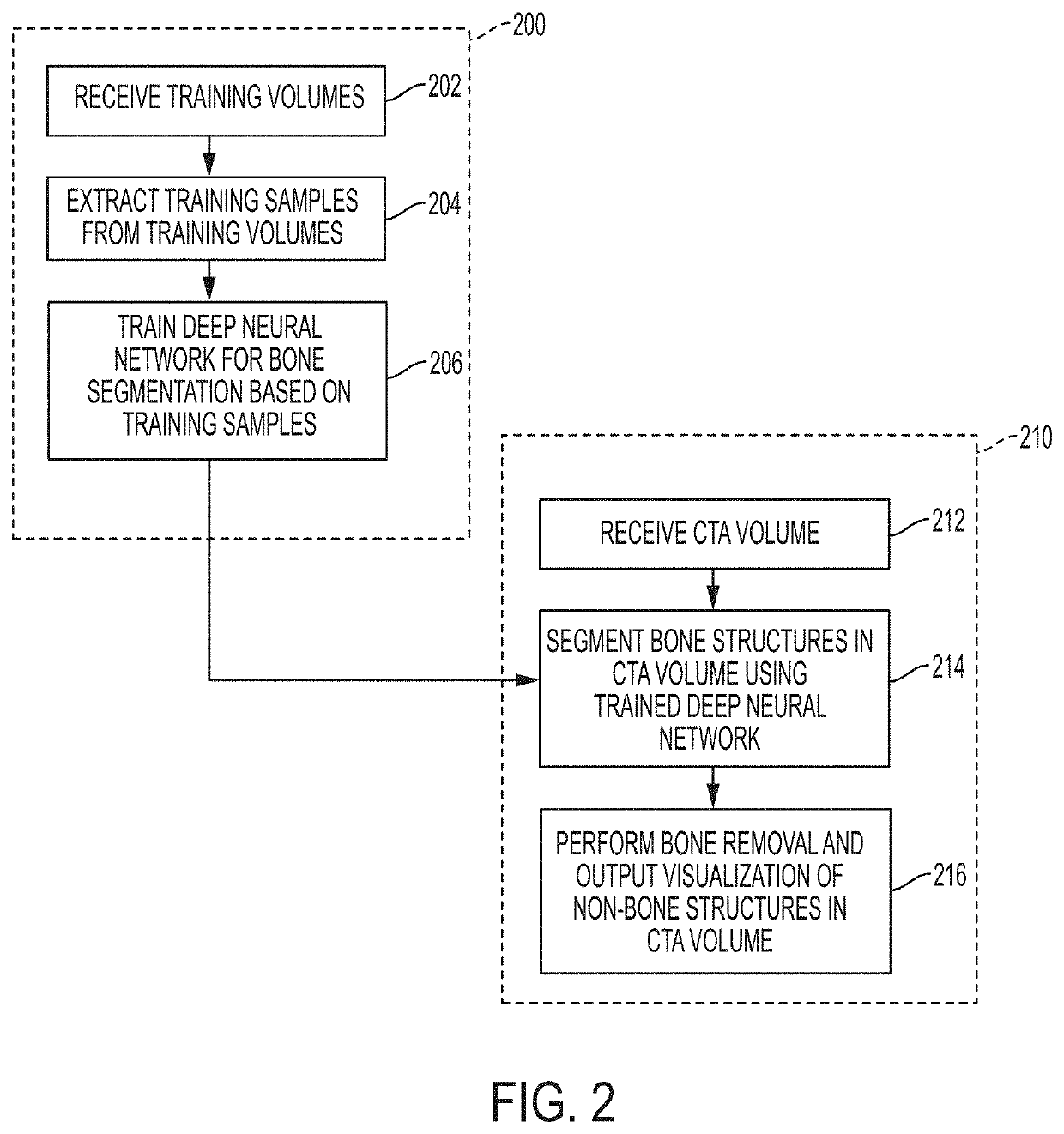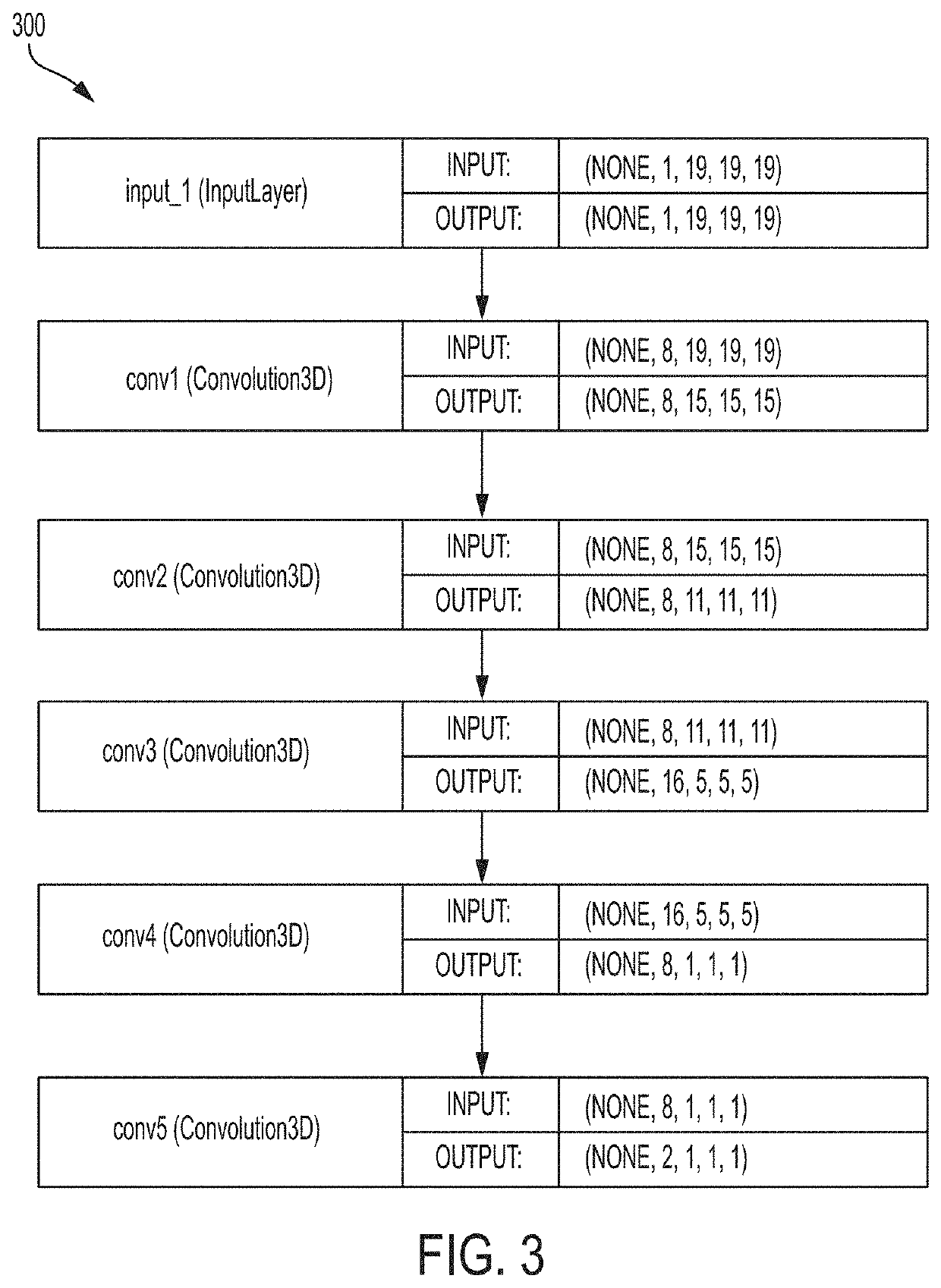Deep learning based bone removal in computed tomography angiography
a computed tomography and deep learning technology, applied in the field of deep learning based bone removal in computed tomography angiography, can solve the problems of inability to achieve practical use of manual editing, inconvenient and long operating time required for manual editing, and significant challenges in automatic segmentation and bone removal of image data
- Summary
- Abstract
- Description
- Claims
- Application Information
AI Technical Summary
Benefits of technology
Problems solved by technology
Method used
Image
Examples
Embodiment Construction
[0026]The present invention relates to a method and system for deep learning based bone removal in computed tomography angiography (CTA) images. Embodiments of the present invention are described herein to give a visual understanding of the deep learning based bone removal method. A digital image is often composed of digital representations of one or more objects (or shapes). The digital representation of an object is often described herein in terms of identifying and manipulating the objects. Such manipulations are virtual manipulations accomplished in the memory or other circuitry / hardware of a computer system. Accordingly, is to be understood that embodiments of the present invention may be performed within a computer system using data stored within the computer system.
[0027]Automatic removal on bones in CTA images is a challenging task, due to the fact that many osseous and vascular structures have similar patterns of shape and contrast. The close proximity of bones and vessels,...
PUM
 Login to View More
Login to View More Abstract
Description
Claims
Application Information
 Login to View More
Login to View More - R&D
- Intellectual Property
- Life Sciences
- Materials
- Tech Scout
- Unparalleled Data Quality
- Higher Quality Content
- 60% Fewer Hallucinations
Browse by: Latest US Patents, China's latest patents, Technical Efficacy Thesaurus, Application Domain, Technology Topic, Popular Technical Reports.
© 2025 PatSnap. All rights reserved.Legal|Privacy policy|Modern Slavery Act Transparency Statement|Sitemap|About US| Contact US: help@patsnap.com



